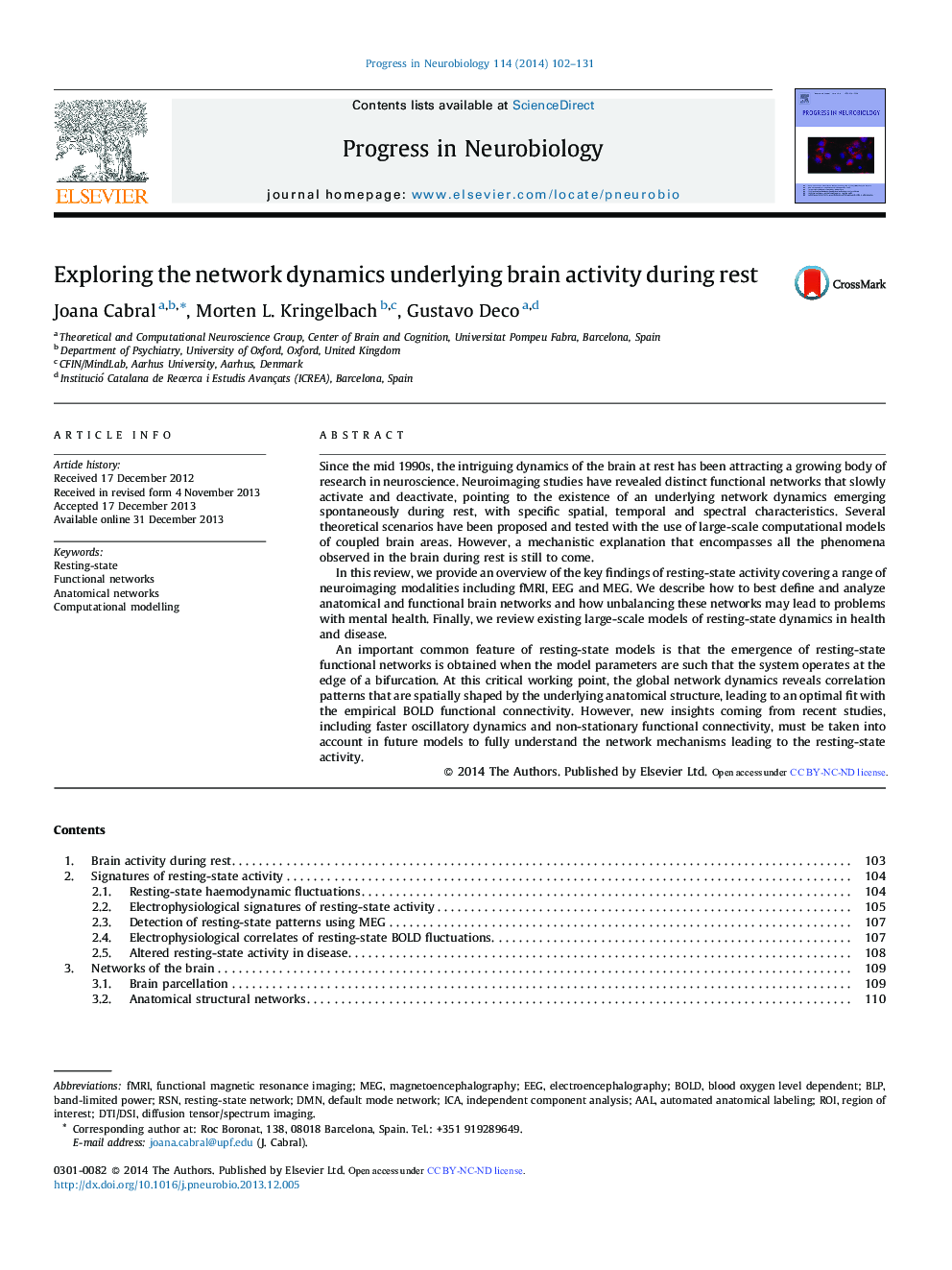| Article ID | Journal | Published Year | Pages | File Type |
|---|---|---|---|---|
| 6286538 | Progress in Neurobiology | 2014 | 30 Pages |
â¢Neuroimaging studies reveal organized brain activity at rest.â¢Anatomical connectivity shapes resting-state functional networks.â¢Computational models explore the structure-function relationship.â¢Models indicate that the resting brain operates at the edge of a bifurcation.â¢Future models need to incorporate non-stationarity and oscillatory dynamics.
Since the mid 1990s, the intriguing dynamics of the brain at rest has been attracting a growing body of research in neuroscience. Neuroimaging studies have revealed distinct functional networks that slowly activate and deactivate, pointing to the existence of an underlying network dynamics emerging spontaneously during rest, with specific spatial, temporal and spectral characteristics. Several theoretical scenarios have been proposed and tested with the use of large-scale computational models of coupled brain areas. However, a mechanistic explanation that encompasses all the phenomena observed in the brain during rest is still to come.In this review, we provide an overview of the key findings of resting-state activity covering a range of neuroimaging modalities including fMRI, EEG and MEG. We describe how to best define and analyze anatomical and functional brain networks and how unbalancing these networks may lead to problems with mental health. Finally, we review existing large-scale models of resting-state dynamics in health and disease.An important common feature of resting-state models is that the emergence of resting-state functional networks is obtained when the model parameters are such that the system operates at the edge of a bifurcation. At this critical working point, the global network dynamics reveals correlation patterns that are spatially shaped by the underlying anatomical structure, leading to an optimal fit with the empirical BOLD functional connectivity. However, new insights coming from recent studies, including faster oscillatory dynamics and non-stationary functional connectivity, must be taken into account in future models to fully understand the network mechanisms leading to the resting-state activity.
